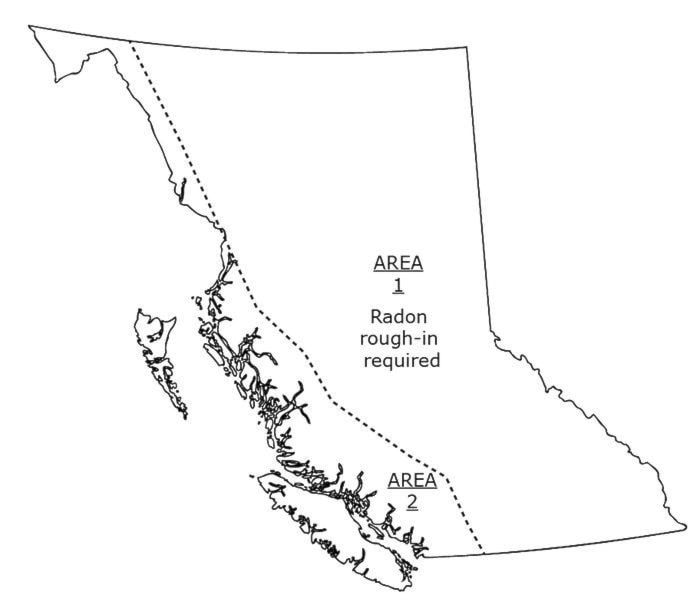Chris Stedile
Castlegar News
The BC Lung Association is elated to hear news that the B.C. government has decided to enforce stronger radon safety precautions in all future homes.
Effective Dec. 19, to pass inspection and obtain occupancy permits, all new housing in Area 1 of B.C. (see map diagram) must have a radon vent-pipe that extends from beneath the basement floor of the house and safely exhausts to the outdoors through the attic and out the roof.
This system is also known as a Passive Radon Reduction System.
The timing could not have been better as November is Radon Action Month.
“This is a huge gain for protecting public health,” said Britt Swoveland, Provincial RadonAware Coordinator for the BC Lung Association. “B.C.’s new radon building code protection requirement is among the strongest in Canada, and sets an example for other provinces to follow.”
Radon is a colourless, odorless, radioactive gas that is the result of uranium breaking down beneath the soil, and is the leading cause of lung cancer in non-smokers.
Swoveland stated that radon can easily build up to dangerous levels in a cramped space — such as a basement — and if left unchecked can cause serious health altercations.
“Our research confirmed building regulations for radon currently in place were having little effect and substantiated the need for code changes,” said Phil Markin, building services director for the City of Castlegar and radon study partner.
Current code regulations only required the rough-in of a pipe from beneath a home’s basement floor extending up through the slab floor and capped off.
This is also known as a capped pipe system.
“Our findings established the minimum requirement for effective home radon protection in new construction should be the installation of a radon vent pipe,” said Swoveland. “But it’s important to note that while our study confirmed installation of a radon vent pipe consistently reduced radon levels, it didn’t consistently succeed in reducing radon below the Health Canada recommended safety threshold.”
To achieve further radon dispersal Swoveland recommends homeowners upgrade their venting system to an Active Radon Reduction System.
All this is, is a fan added to the top of the vent allowing radon to be pulled through the pipe system at a more efficient rate.
During the winter of 2014, the BC Lung Association partnered with the City of Castlegar to assess the effectiveness of the current capped pipe systems in place, compared to the new pipe venting system.
Research was conducted in 16 homes in the Castlegar/Nelson area and in Prince George. In Oct. 2014, results were shared with the Ministry Responsible for Housing, Building and Construction Standards Branch.
“In the future, we suggest the government consider radon testing be required as a condition of new home occupancy, and, where test results are high, the addition of a fan be required,” added Swoveland.
“The good news for now is that a homeowner can, if warranted, fairly easily and inexpensively add a fan themselves.”
For any homeowners concerned about radon levels, test kits are available to purchase.
“You don’t know unless you test,” Swoveland added. “The test kit is inexpensive and convenient. Everyone should test their homes.”
“Is radon something British Columbians should be wary of? Yes. Should we panic? No,” said Swoveland. “But we do encourage all British Columbians to test their homes, and to mitigate if radon levels are high.”
For information on radon and radon test kits please visit RadonAware.ca.
